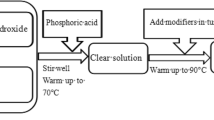Abstract: A binder for refractory castables is a bonding material that bonds a loose powdery mix, retains its shape after casting and allows the cast shape to set and harden for handling and further processing. A binder also improves sintering, as the castables are not compacted during shaping, causing poor densification and strength. Initially, plastic clay was used as a binder for castables, but soon it was found to have more disadvantages than benefits. Next came the alumina cements with an alumina content below 50 %, but this resulted in degraded hot properties due to low temperature liquid phase formation. The performance of the castables was improved with an increase in the alumina content of the cement. However, the presence of lime continued to be a concern with high temperature uses. Then came the binders without lime, like sol-gel, hydrated alumina, phosphates, etc. Different bonding systems have their own advantages and limitations and are being used as per the requirements of the application site. The present paper reviews the different types of binders available for castables and gives an elaborate idea for their functioning and performance.



Similar content being viewed by others
Author information
Authors and Affiliations
Rights and permissions
About this article
Cite this article
Sarkar, R. Binders for Refractory Castables: An Overview. Interceram. - Int. Ceram. Rev. 69, 44–53 (2020). https://doi.org/10.1007/s42411-020-0112-x
Published:
Issue Date:
DOI: https://doi.org/10.1007/s42411-020-0112-x



